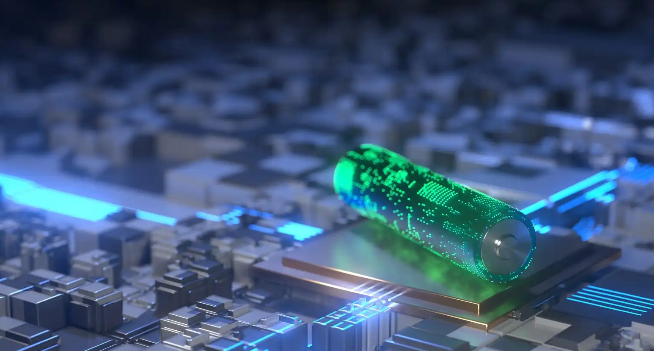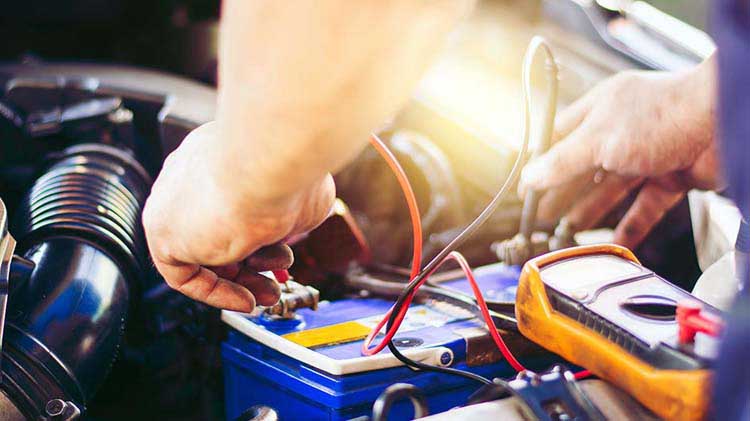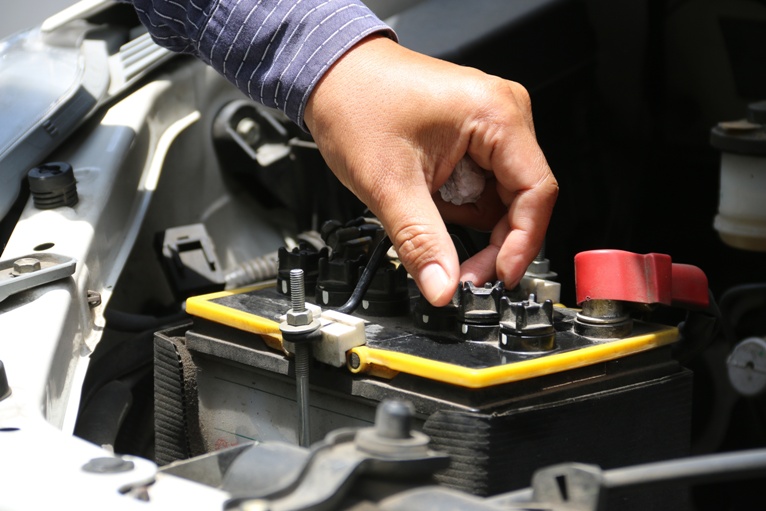Lithium Iron Phosphate Battery: In-depth Analysis of its Technical Principles and Characteristics
Lithium iron phosphate battery, as an important type of lithium-ion battery, has occupied a place in the field of energy storage since its birth due to its unique performance advantages. This article will thoroughly analyze the technical principles, structural characteristics and significant features of LFPB, but will not cover specific application areas and future prospects.
Technical Principles and Structural Features
The lithium iron phosphate battery, whose full name is lithium iron phosphate lithium-ion battery, is based on the use of lithium iron phosphate (LiFePO?) as the positive electrode material, while the negative electrode is usually made of carbon (graphite) material. The design of this battery allows its single cell nominal voltage to reach 3.2V, and the charge cut-off voltage is controlled between 3.6V and 3.65V.

From the perspective of battery structure, the left side of the lithium iron phosphate battery is the olivine-structured LiFePO? positive electrode material, which is connected to the positive electrode of the battery by aluminum foil; the right side is the carbon (graphite) negative electrode, which is connected to the negative electrode of the battery by copper foil. In the middle is a polymer separator, which effectively separates the positive electrode from the negative electrode, but allows lithium ions to pass through, but not electrons. The battery is filled with electrolyte and sealed with a metal case to ensure the safety and stability of the battery.
During the charging and discharging process, the operating principle of lithium iron phosphate batteries depends on the migration of lithium ions. During charging, some lithium ions in the positive electrode LiFePO? are released, transferred to the negative electrode through the electrolyte and embedded in the carbon material of the negative electrode; at the same time, the electrons released from the positive electrode flow to the negative electrode through the external circuit to maintain the balance of the chemical reaction. During discharge, the process is reversed. Lithium ions are released from the negative electrode and return to the positive electrode through the electrolyte. At the same time, electrons are released from the negative electrode and flow to the positive electrode through the external circuit to supply energy to the outside world.
Key Features
Lithium Iron Phosphate battery can stand out among many lithium-ion batteries mainly because of the following significant features:
High operating voltage and high energy density: The single cell nominal voltage of LFPB reaches 3.2V, and it has high energy density, which means it can store more electrical energy in the same volume or weight.
Long cycle life: Compared with other types of lithium-ion batteries, lithium iron phosphate batteries have a longer cycle life, generally reaching more than 2,000 times, and even more than 3,500 times under certain conditions. This long life characteristic makes it more advantageous in situations where frequent charging and discharging is required.
Excellent safety performance: The P-O bond in the lithium iron phosphate crystal structure is stable and difficult to decompose. Even under high temperature or overcharge conditions, it will not easily experience thermal runaway or form strong oxidizing substances like materials such as lithium cobalt oxide. This makes lithium iron phosphate batteries particularly safe.
Low self-discharge rate and no memory effect: The self-discharge rate of lithium-iron-phosphate batteries is relatively low, and there is no common memory effect such as nickel-metal-hydride and nickel-cadmium batteries. This means that users can charge and discharge the battery at any time without worrying about the loss of battery capacity.
Environmentally friendly: Lithium Iron Phosphate batteries do not contain any heavy metal elements that are harmful to the human body and are considered to be green and environmentally friendly battery products. It complies with European RoHS regulations, does not pollute the environment, and meets the current global requirements for energy conservation, emission reduction and sustainable development.

Technical Challenges and Improvement Directions
Although lithium iron phosphate batteries have many advantages, they also face some technical challenges. These include poor performance at low temperatures, low tap density of positive electrode materials, and high material preparation and battery manufacturing costs. To overcome these challenges, researchers are constantly exploring new synthesis methods and modification technologies to improve the overall performance of LFP batteries.
In summary, as an important type of lithium-ion battery, lithium iron phosphate battery has wide application prospects in the field of energy storage. With the continuous advancement of technology and further cost reduction, it is believed that LFPB will bring its unique advantages to more fields.
-
 Industrial Power Products Batteries, also known as IPP Batteries, are essential components in various industries. These batteries are designed to provide reliable and long-lasting power for industrial applications. With their advanced technology and superior performance, IPP Batteries have become a preferred choice for many businesses around the world. One of the key features that set IPP Batteries apart from...En savoir plus
Industrial Power Products Batteries, also known as IPP Batteries, are essential components in various industries. These batteries are designed to provide reliable and long-lasting power for industrial applications. With their advanced technology and superior performance, IPP Batteries have become a preferred choice for many businesses around the world. One of the key features that set IPP Batteries apart from...En savoir plus -
 Introduction In recent years, the global energy landscape has witnessed a remarkable shift towards renewable energy sources. As reliance on renewable energy grows, there is an urgent need for effective energy storage solutions to address the intermittent nature of these sources. Lithium-ion batteries have emerged as a game-changing technology in the field of energy storage, paving the way for...En savoir plus
Introduction In recent years, the global energy landscape has witnessed a remarkable shift towards renewable energy sources. As reliance on renewable energy grows, there is an urgent need for effective energy storage solutions to address the intermittent nature of these sources. Lithium-ion batteries have emerged as a game-changing technology in the field of energy storage, paving the way for...En savoir plus -
 Portable jump starter battery packs are a must-have for anyone who drives a car. These battery packs are designed to provide an emergency power source to jump start your car when your battery dies. They are compact, lightweight, and easy to carry around in your car, making them perfect for long road trips, camping trips, or just for everyday use....En savoir plus
Portable jump starter battery packs are a must-have for anyone who drives a car. These battery packs are designed to provide an emergency power source to jump start your car when your battery dies. They are compact, lightweight, and easy to carry around in your car, making them perfect for long road trips, camping trips, or just for everyday use....En savoir plus -
 The manufacturing industry plays a crucial role in the global economy, driving innovation and creating products that improve our daily lives. To keep up with the demands of modern manufacturing processes, industrial battery chargers have become an essential component in powering the future of this industry. These chargers provide a reliable and efficient source of energy, ensuring uninterrupted production processes...En savoir plus
The manufacturing industry plays a crucial role in the global economy, driving innovation and creating products that improve our daily lives. To keep up with the demands of modern manufacturing processes, industrial battery chargers have become an essential component in powering the future of this industry. These chargers provide a reliable and efficient source of energy, ensuring uninterrupted production processes...En savoir plus -
 In today's fast-developing technological era, lithium batteries, as a leader in the field of energy storage, are leading the wave of global energy transition and green development. In order to help you better understand lithium batteries, this article will thoroughly explore their working principle, application field, technological progress, and future development trends to provide you with strong support for your...En savoir plus
In today's fast-developing technological era, lithium batteries, as a leader in the field of energy storage, are leading the wave of global energy transition and green development. In order to help you better understand lithium batteries, this article will thoroughly explore their working principle, application field, technological progress, and future development trends to provide you with strong support for your...En savoir plus -
 When it comes to boating, having a reliable power source is crucial for a smooth and enjoyable experience on the water. One of the most important components of a boat's electrical system is the marine battery, responsible for powering various onboard devices and systems. Investing in a high-quality marine battery is essential for any boat owner, as it provides the...En savoir plus
When it comes to boating, having a reliable power source is crucial for a smooth and enjoyable experience on the water. One of the most important components of a boat's electrical system is the marine battery, responsible for powering various onboard devices and systems. Investing in a high-quality marine battery is essential for any boat owner, as it provides the...En savoir plus -
 Introduction: In recent years, there has been a growing concern about environmental sustainability and the need for more efficient power solutions across various industries. The forklift industry is no exception, as it plays a vital role in material handling operations. Traditionally, forklifts have been powered by lead-acid batteries, which have several limitations. However, with the advancement in technology, the introduction...En savoir plus
Introduction: In recent years, there has been a growing concern about environmental sustainability and the need for more efficient power solutions across various industries. The forklift industry is no exception, as it plays a vital role in material handling operations. Traditionally, forklifts have been powered by lead-acid batteries, which have several limitations. However, with the advancement in technology, the introduction...En savoir plus

